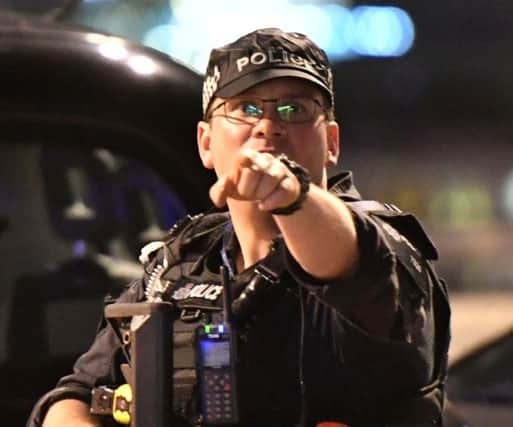Experts warn vehicle street attacks '˜almost impossible' to prevent in cities


As Prime Minister Theresa May signalled a shift in tone following the latest atrocity, vowing to review the UK’s counter-terrorism strategy in the face of a “new trend” in extremist violence, experts said the targeting of busy thoroughfares posed a near-insurmountable problem.
They said increasingly visible armed police patrols and improved intelligence was the only viable response. One respected defence analyst said efforts to protect busy streets would come down to “a question of scale”.
Advertisement
Hide AdAdvertisement
Hide AdThose behind Saturday night’s attack hit pedestrians as their white van travelled at around 50mph along London Bridge, before three men left the vehicle and stabbed members of the public and police officers. The incident bears hallmarks of March’s attack in the capital, when Khalid Masood drove a car into pedestrians on Westminster Bridge.
Both attacks are consistent with a major increase in terrorism incidents the world over in which vehicles are used as weapons. The University of Maryland’s National Consortium for the Study of Terrorism and Responses to Terrorism said there have been more than 75 such attacks against civilian, police and military targets between 2014 and 2016.
Some terrorism experts believe bridges are being deliberately targeted by attackers, and that efforts to curb the threat would simply create danger elsewhere.
Kris Christmann, an applied criminologist at the University of Huddersfield, who specialises in radicalisation and counter-terrorism, said: “I suspect London Bridge was chosen because there isn’t much street furniture which would act as an obstacle, and it allows the attackers to gain speed.
“You could introduce speed restriction measures on bridges, but there are many streets with limited points of access and why wouldn’t an attacker simply choose another street? The moment you introduce those counter-measures, you shift the threat.”
Jon Coaffee, professor in urban geography at the University of Warwick, who studies terrorism risks to cities, said such attacks were “almost impossible to stop through conventional security means.”
While he said there were measures that could be used on busy thoroughfares, they were not the right response to the nature of the threat.
“There are of course many types of street furniture that could be put in place, assuming there is sufficient room, the most likely of which would be security bollards,” he said. “The police could, if they desired, also set up roadblock or checkpoints on all major bridges as they did in the City of London and the Isle of Dogs in the London Docklands in the 1990s, but I’m not sure this is a proportionate response.”
Advertisement
Hide AdAdvertisement
Hide AdMr Christmann said that following the 2001 and 2005 terrorist attacks in New York and London, a “vast amount of work” has been done in the UK capital to ensure the city environment is “hostile” to would-be attackers, especially those planning vehicle IED attacks.
Although streets across swaths of London, such as Whitehall, have been retrofitted with anti-ramming barriers, bollards, and other counter-terrorism measures, the vast majority of the physical protection has been afforded to high-profile targets, such as the Palace of Westminster and Buckingham Palace.
Any efforts to replicate that across London or other cities would, experts believe, would be little more than pointless.
“We have secure-by-design measures in place, but the attackers are innovative and adaptive, and what the state cannot do is protect all crowded places,” explained Mr Christmann, who together with his colleagues, recently completed a European Union-commissioned study into how best to prevent urban hubs from terrorist attacks.
“Faced with very determined and opportunistic attackers, there is no sure situational or site specific measure the City of London could put in place that would prevent an incident; the attackers would simply choose another street.”
Veteran defence analyst Tim Ripley agreed there was little that could be done by way of physical impediments to prevent copycat attacks, and suggested the focus should be on preventing atrocities in “large open spaces”.
“How do you stop somebody jumping out of a van and stabbing people in the street?” he said. “The physical ability to prevent that is almost non-existent. If someone wants to carry out an attack like that, then beyond any downstream intelligence, it’s next to impossible to stop.
“With iconic public spaces like Edinburgh Castle, Trafalgar Square, and the Palace of Holyroodhouse, you can put bollards and barriers in place, but you cannot erect walls or bollards around every pavement in the country.”
Advertisement
Hide AdAdvertisement
Hide AdMr Ripley went on: “It comes down to a question of scale. You can obviously focus on large open spaces to prevent mass casualties, but if someone wants to drive a car off a road and run people over, you can’t protect every person in every place in the country.”
He suggested that time, architects and planning authorities would factor in the kind of threats witnessed in recent months when it comes to new developments.
“You will get a point where urban planners consider counter-terror measures at the start of projects,” he added. “At the moment we just add them onto the likes of shopping centres and airports, but they will become standard.”